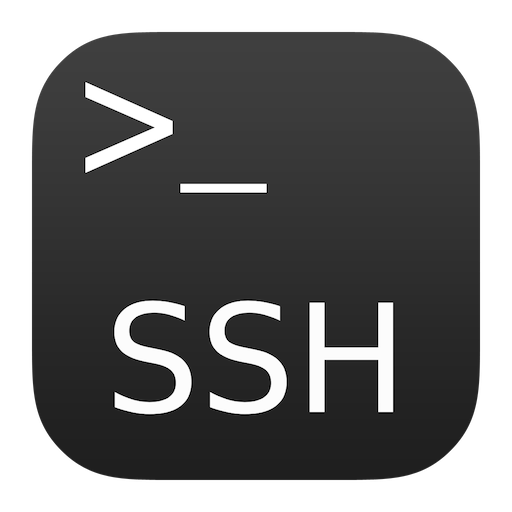Access IoT: Remoteiot Platform SSH On Android - Download & Setup
Are you ready to unlock the full potential of your Internet of Things (IoT) devices from the palm of your hand? Mastering remote access to your IoT devices via SSH on your Android device is not just a convenienceit's a necessity in today's interconnected world.
The landscape of technology has shifted dramatically, with the Internet of Things (IoT) emerging as a cornerstone of modern innovation. From smart homes to industrial automation, IoT devices are transforming how we live, work, and interact with the world. However, the proliferation of these devices brings forth a critical challenge: the need for secure and efficient remote management. Traditional methods often fall short, leaving users vulnerable to security breaches and operational inefficiencies. The demand for a robust and secure solution has given rise to platforms like Remoteiot, which leverages the power of SSH (Secure Shell) to provide a seamless and secure remote access experience.
This article serves as your comprehensive guide to navigating the world of Remoteiot and SSH access on your Android device. We will delve into the core functionalities of Remoteiot, exploring how it facilitates secure connections, file transfers, and device management. You'll learn how to download, set up, and configure Remoteiot on your Android device. We'll also explore practical applications and the best practices that will empower you to manage your IoT devices from anywhere in the world. Lets begin by understanding the fundamental role of SSH in securing remote connections and why Remoteiot stands out as the preferred solution for Android users.
At its core, SSH is a cryptographic network protocol that ensures secure communication between devices over an unsecured network. Imagine it as a fortified tunnel that protects data as it travels between your Android device and your IoT devices. SSH employs robust encryption algorithms to safeguard sensitive information, preventing unauthorized access and ensuring data integrity. This is a critical advantage over less secure protocols. Remoteiot leverages this secure tunnel to provide a reliable and protected pathway for accessing and managing your devices.
The essence of Remoteiot lies in its ability to provide a user-friendly and streamlined SSH connection experience specifically tailored for Android users. The platform streamlines the process of establishing a secure link between your Android device and your IoT devices. From downloading the necessary apps to configuring the SSH settings, Remoteiot guides you through every step of the process, making it easy even for those who are new to remote device management. The core features, including the capability to securely transfer files using SFTP (Secure File Transfer Protocol) and SCP (Secure Copy), allow for complete control over your devices and data.
Consider the scenario of a smart home owner who is away on vacation. Without remote access capabilities, they would be unable to monitor or control their homes security system, lighting, or climate control. With Remoteiot and SSH, they can securely access and manage these systems from their Android devices, ensuring peace of mind and convenience. This is just one example of how Remoteiot can revolutionize remote management and provide unparalleled control over connected devices.
Understanding the various components that comprise a Remoteiot setup is essential to grasping how the platform operates. The first key element is the Android device itself, which serves as the interface for managing remote devices. A secure SSH client app, specifically designed for Remoteiot, is the next crucial component. This app handles the establishment of secure connections, authentication, and the execution of commands. Finally, the IoT devices are the targets of management, equipped with SSH servers that facilitate secure communication.
To get started, you will first need to download the appropriate SSH client app for Remoteiot from a trusted source. Once the app is installed, youll need to configure the SSH settings to connect to your IoT devices. This typically involves entering the device's IP address, username, password, and port number for the SSH service. The app then establishes a secure connection, allowing you to interact with your devices.
Once the secure connection is established, you can begin to control and monitor your IoT devices. Remoteiot supports a wide range of functionalities, including command execution, file transfer, and real-time monitoring. For instance, you can use SSH commands to start or stop services, reboot devices, or configure system settings. The ability to transfer files securely allows you to upload or download configuration files, software updates, and other essential data. Real-time monitoring enables you to track the performance of your devices, identify issues, and receive alerts.
A critical aspect of the Remoteiot platform is the seamless file transfer capabilities that support SFTP and SCP. The ability to securely transfer files to and from your IoT devices is a core requirement for remote management. SFTP is a secure file transfer protocol built on SSH, providing a secure and encrypted channel for transferring files between your Android device and your IoT devices. SCP, on the other hand, is a command-line tool that allows you to copy files securely over SSH. Both SFTP and SCP ensure that your data remains protected during the transfer process, preventing unauthorized access and data breaches.
Let's delve deeper into the practical implementation of SFTP and SCP. The process generally involves connecting to your IoT device via the SSH client and then using either the built-in file management capabilities of the client or a separate SFTP client app. You can then browse the file system on your IoT device and perform operations like uploading, downloading, and deleting files. SCP is typically executed through the command line, where you specify the source and destination files and directories. The Remoteiot platform provides clear guidelines and easy-to-follow tutorials to help you get started.
The benefits of using Remoteiot are numerous. The platform offers a secure, reliable, and efficient way to manage IoT devices. By utilizing SSH, it ensures all communications are encrypted and protected from interception. The user-friendly interface streamlines the management process, and the ability to transfer files securely enables complete control over your devices. This combination of features offers unparalleled flexibility and convenience for those who need to manage their IoT devices remotely.
Remoteiot also caters to those seeking to manage remote servers directly from their Android devices with its web SSH capabilities. This feature allows users to securely access and manage remote servers directly from their Android devices. This is especially useful for system administrators, developers, and anyone who needs to monitor and manage servers on the go. The web SSH feature is accessible through the Remoteiot client, providing a complete and integrated solution for remote access and management.
In a world that is increasingly connected, the importance of remote device management cannot be overstated. Remoteiot provides a compelling solution for Android users, offering a blend of security, functionality, and ease of use. From simple tasks like checking device status to complex operations like software updates, Remoteiot equips users with the tools they need to manage their IoT devices from anywhere in the world. By adhering to the guidelines and best practices outlined in this guide, you can embark on your journey to become a master of remote IoT device management.
The integration of Remoteiot into your daily life offers an elevated level of control and flexibility. Consider the benefits of being able to troubleshoot a problem from miles away, ensuring optimal functionality without having to be physically present. Or imagine being able to monitor the status of your connected devices and receive immediate alerts if something goes wrong, enabling you to address issues before they escalate.
As the demand for remote management continues to increase, so does the importance of secure communication. Remoteiot addresses this critical need by prioritizing security at every stage. From the encryption of data transmission to secure authentication protocols, the platform is designed to protect your devices and data from unauthorized access. This commitment to security gives users peace of mind, knowing that their data is safe.
The process of mastering Remoteiot and SSH access on Android is an exercise in empowerment. By understanding the key features, implementing secure connections, and mastering the best practices outlined in this guide, you can take control of your IoT devices and unlock their full potential. Remoteiot is not just a solution; it is a gateway to a new era of remote management, providing a secure, reliable, and efficient way to manage and monitor your connected devices from anywhere in the world.
Remember, consistent practice and a willingness to explore the various features of Remoteiot will enhance your proficiency. As you become more comfortable with the platform, you'll discover new ways to streamline your device management tasks, optimize performance, and maintain a secure connection to your connected devices.
Embrace the future of device management today by mastering Remoteiot and SSH access on your Android device. From the first download to the final command, Remoteiot is your dedicated partner in navigating the ever-expanding landscape of the Internet of Things. The journey towards efficient and secure remote management starts now.
Here is the comparison between the various features
| Feature | Description | Benefit |
|---|---|---|
| Secure Shell (SSH) | A cryptographic network protocol that ensures secure communication. | Secure communication between devices. |
| Remoteiot Platform | Platform to manage and monitor IoT devices from a distance. | Control, monitor, and manage devices remotely. |
| Android Compatibility | Optimized for Android users. | Seamless SSH connection experience for Android users. |
| File Transfer (SFTP/SCP) | Secure file transfer protocols. | Securely transfer files to/from remote devices. |
| Web SSH | Access and manage remote servers directly from Android devices. | Secure access and management of remote servers. |



